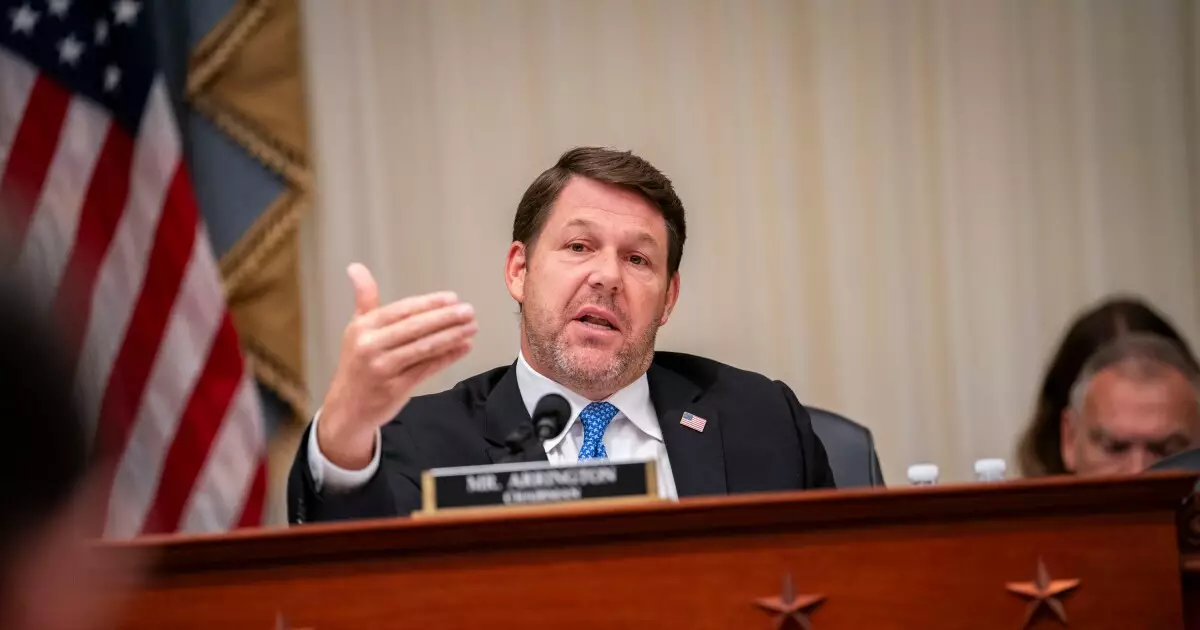In a time of fiscal uncertainty and partisan rifts, the recent passage of a budget resolution by the House Budget Committee highlights the complexities of governance in America. This article examines the nuances of the resolution, its implications for tax policy, and the broader political landscape influencing these developments.
A Partisan Victory Amidst Division
The House Budget Committee’s approval of a budget resolution with a 21-16 vote reflects the stark division within Congress. Following a grueling 12-hour debate, the resolution was adopted strictly along party lines, showcasing the challenges of a fragile majority for House Republicans. This divide underscores the contentious backdrop against which these discussions take place; a backdrop where bipartisan cooperation seems increasingly elusive.
The budget resolution serves as a foundation for what is expected to be an intense debate regarding a future reconciliation package—one that municipal markets are observing closely, particularly for any potential threats to tax exemptions. As policymakers prepare to unfold a complex fiscal agenda, the stakes for various sectors of the economy, especially municipal finance, increase palpably.
At the core of the budget resolution is the reconciliation process, which aims to streamline legislative procedures for budget-related bills. The Senate, for its part, is separately crafting its own reconciliation package that divides the Trump administration’s agenda into two distinct initiatives. One key element of concern is the treatment of tax reforms—the impact of which will reverberate through various sectors of the economy, further complicating the reconciliation process.
The resolution links projected tax cuts—amounting to $4.5 trillion, largely stemming from extensions of the 2017 Tax Cuts and Jobs Act (TCJA)—to the necessity of identifying $2 trillion in spending cuts. This linkage not only adds even more complexity to the already tangled budgetary situation but raises questions about the practicality of achieving such monumental fiscal goals without bipartisan support.
If Republicans face difficulty in sourcing those substantial spending cuts, the Ways and Means Committee will be forced to reduce its expected tax cuts by the same amount. Conversely, if adequate spending cuts are identified, Ways and Means may pursue tax cuts exceeding $4.5 trillion. This open-ended approach exemplifies the precarious balancing act lawmakers are attempting to perform.
Implications on National Debt and Fiscal Responsibility
In a bid to avoid a governmental deadlock, the budget resolution also proposes a significant increase to the national debt limit, adding a staggering $4 trillion. This short-term fix is aimed at preventing the looming “X date,” a deadline where the government may exhaust its ability to borrow funds. Critics of the measure may argue that such an increase further compounds the already heavy burden of national debt, while proponents assert that it is necessary for maintaining fiscal stability and funding essential programs.
House Budget Chairman Jodey Arrington has characterized the resolution as a critical building block for one of the most consequential legislative efforts in recent history. The resolution intends to provide a framework that aligns with President Trump’s “America First” agenda, yet it faces substantial hurdles due to competing priorities and a lack of consensus across party lines.
As Congress prepares for its impending break, the resolution is expected to make its way to the House floor upon lawmakers’ return. Representatives are poised to initiate debates on the substance of the resolution, informed by the complexities of tax reform and the associated fiscal policies.
Moreover, the reconciliation strategy can proceed rapidly once the budget resolution’s language is solidified. Observers are reminded of the timeline surrounding the passage of the TCJA, which underscores the importance of timing and clarity in legislative processes.
The recent developments within the House Budget Committee reflect a legislative process fraught with challenges and political maneuvering. As tax reform efforts advance alongside the necessity to navigate the intricacies of reconciliation, the interplay between fiscal responsibility and political imperatives will remain at the forefront of America’s economic discourse. The resolution represents not just a financial blueprint but a manifestation of the ongoing struggle to define America’s fiscal future amidst fractious political landscapes.

